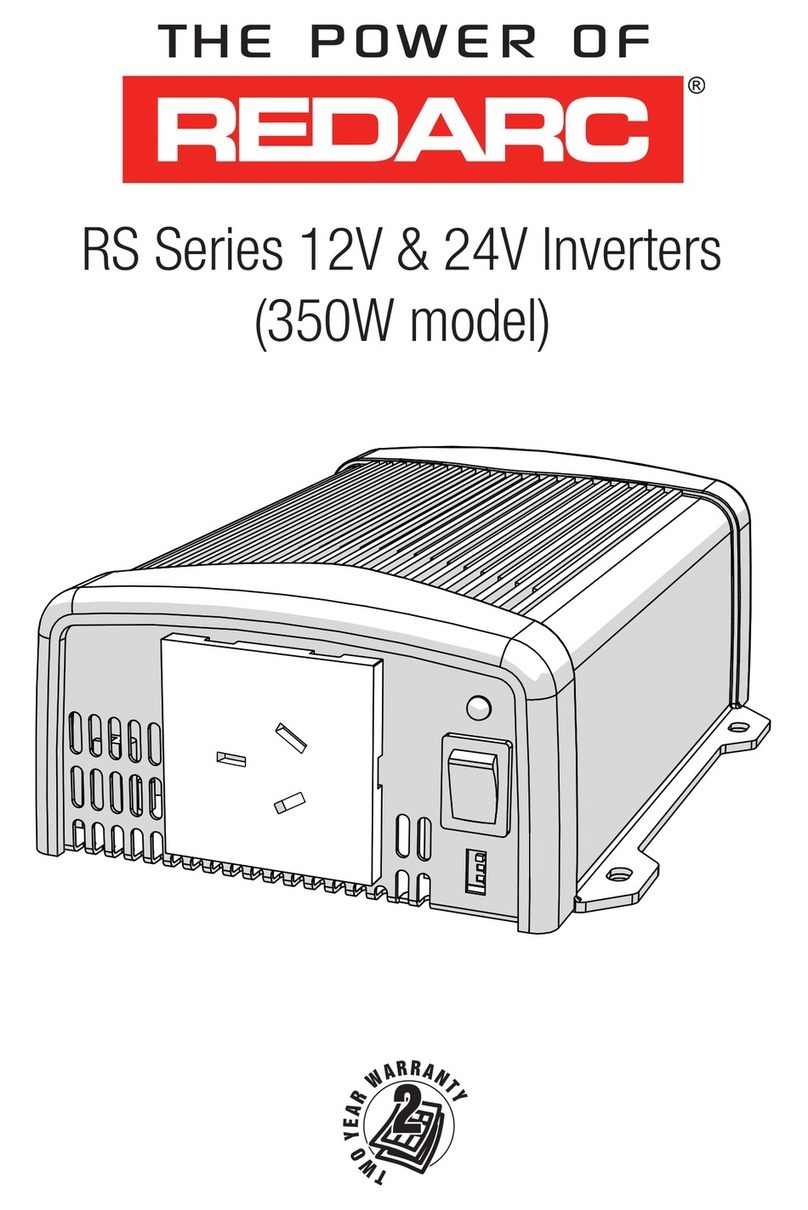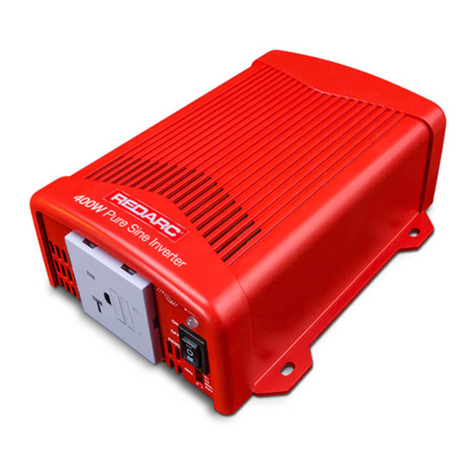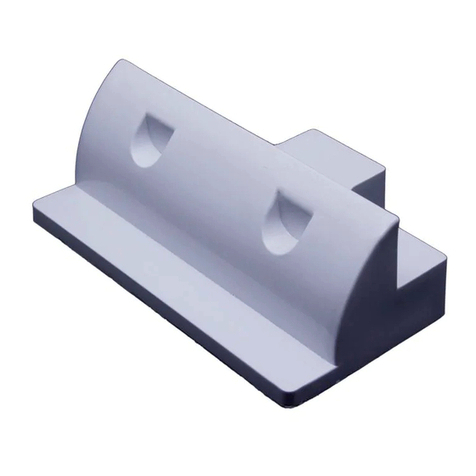
Warnings and Safety Instructions | 5
Some components in the inverter can cause arcs and sparks. Do not put batteries, ammable materials,
liquids, or anything that should be ignition–protected around the inverter. Doing so may result in re or
explosion.
Be extra cautious to reduce the risk of dropping a metal tool onto a vehicle battery. Doing so might cause
the battery to spark or might short-circuit the battery or other electrical parts that may cause an explosion.
Remove personal metal items such as rings, bracelets, necklaces, and watches when working with a
battery. A battery can produce a short-circuit current high enough to weld a ring or the like to metal,
causing a severe burn.
If battery acid contacts your skin or clothing, remove the affected clothing and wash the affected area of
your skin immediately with soap and water. If battery acid enters your eye, immediately ood the eye with
running cold water for at least 10 minutes and seek medical assistance immediately.
NEVER smoke or allow a spark or ame in vicinity of battery. This may cause the battery to explode.
Batteries are capable of providing very large currents in the case of a short circuit. A fuse must be installed
on the positive supply cable as close as practical to the battery. Failure to do so provides inadequate
protection against re in the case of a short circuit. Only use high quality copper cable and keep the cable
length short, refer to Section 3.1 (page 14) for more information.
NOTICE
Upon receipt, examine the box for damage. If you have found any damage on the box, please notify the
company you purchased this unit from.
Install the inverter in a well-ventilated area with reasonable clearance. Do not install the inverter in a
zero-clearance compartment or obstruct the ventilation openings. Doing so may result in the inverter
overheating and ultimately damage the inverter.
Reverse Polarity connection will blow the internal fuse and may damage the inverter permanently and could
void the warranty.
Do not operate appliances that may feed power back into the inverter. Damage to the inverter may occur
as a result.
The RS3 Inverters are tted with RCBO, which incorporates both a residual current device as well as a
circuit breaker. The RS3 Inverters comply with AS/NZS 4763 standard and can be used to power xed
wiring in accordance with AS/NZS 3001 when installed by a licensed electrician. A proper ground bond is
required for the RCD to work as intended, see page18 for more information.
Ensure that the frequency output of the inverter matches the frequency requirements of all loads attached
to the inverter. Attempting to use appliances that requires an AC frequency different to the inverter output
may result in damage to your appliances.
All RS3 Series Inverters are suitable for indoor use only.
When the ATS is passing grid power through the load(s), the RCD and over-current protection must be
provided by the 'shore power' supply (refer to Section 1.4 (page 10)).
When the ATS is passing through AC power from the AC Input connection, the integrated M.E.N.
connection (Main Earth Neutral - required for correct operation of the RCD) is not in circuit. The external
AC supply must provide the safety mechanism for the connected loads – consult a qualied electrician.
































